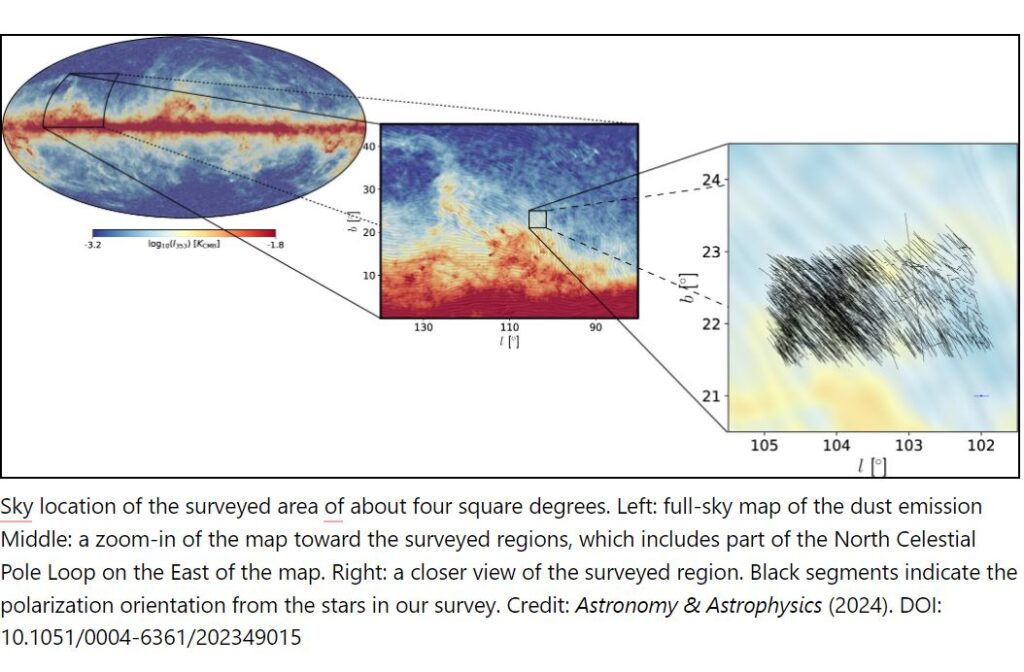
Researchers have developed a new PCB that performs on par with traditional materials and can be recycled repeatedly with negligible material loss...
Read More

Researchers have developed a new PCB that performs on par with traditional materials and can be recycled repeatedly with negligible material loss...
Read More
We are all very familiar with the concept of the Earth’s magnetic field. It turns out that most objects in space have magnetic fields but it’s quite tricky to measure them. Astronomers have developed an ingenious way to measure the magnetic field of the Milky Way using polarized light from interstellar dust grains that align themselves to the magnetic field lines. A new survey has begun this mapping process and has mapped an area that covers the equivalent of 15 times the full moon.
Many people will remember experiments in school with iron filings and bar magnets to unveil their magnetic field. It’s not quite so easy to capture the magnetic field of the Milky Way though. The new method to measure the field relies upon the small dust grains which permeate space between the stars.
...Read MoreScientists use laser ablation technology to develop a deformable micro-supercapacitor. Professor Jin Kon Kim and Dr. Keon-Woo Kim from the Department of Chemical Engineering at Pohang University of Science and Technology (POSTECH), in collaboration with Dr. Chanwoo Yang and Researcher Seong Ju Park from the Korea Institute of Industrial Technology (KITECH), have achieved a significant breakthrough in developing a small-scale energy storage device capable of stretching, twisting, folding, and wrinkling. Their research has been published in the electronic engineering journal, npj Flexible Electronics.
The advent of wearable technology has brought with it a pressing need for energy storage solutions that can keep pace with the flexibility and stretchability of soft electronic devices.
...Read More
Researchers have invented a new optical element that brings us one step closer to mixing the real and virtual worlds in an ordinary pair of eyeglasses using high-definition 3D holographic images.
Holographic images have real depth because they are three dimensional, whereas monitors merely simulate depth on a 2D screen. Because we see in three dimensions, holographic images could be integrated seamlessly into our normal view of the everyday world.
The result is a virtual and augmented reality disp...
Read More
Recent Comments